|
Valentine’s Day is fast approaching, and I’m avoiding the commercialism that comes with it. While some may be rushing to buy flowers, candy, sparkling wine, or rosé to commemorate this day, I’m opening a bottle of sherry and pairing it with a shrimp and bean stew! Yes, that’s right…Sherry! Sherry is known for its aromatic, salty, and nutty profile and styles runs from dry to sweet, although the majority of sherry produced is dry. With many styles to choose from, one can find the perfect sherry to accompany any occasion. Here is a condensed description of sherry from previous articles I’ve written. Sherry is a fortified wine produced in Andalucía, located in the southwest area of Spain. With over 40,000 hectares of vineyards in Andalucía, over half of the wine produced here is in DO (denomination de origin) areas. Sherry can only be made from Palomino, Muscatel, and Pedro Ximénez white grapes. All sherry is aged for a minimum of three years and in old sherry casks using the Solera system. The Solera system is an aging process that uses new batches of sherry mixed with older ones in a tiered or pyramid structure. The bottom tier is the solera, the eldest sherry, which never entirely leaves the system. The rows above contain the younger sherries (criadera). Once a portion of the wine is extracted from the solera, it is replaced with the same amount of wine from the first criadera and so on, creating a unique complexity and personality in the wine. Because sherry is a blend of different vintages, it is impossible to give an exact age of a wine aged in a solera. So it is possible to drink a sherry containing anywhere from 3 to 100 vintages! Styles of Sherry Fino de Jerez is the youngest (usually 3-5 years old) and the driest of sherries. The wine ages under a layer of flor (yeast). This layer of flor protects the wine from being oxidized and consumes all the sugar in the wine, creating a dry sherry. Fino only comes from Jerez and El Puerto de Santa Maria. Manzanilla is another dry sherry that is just like Fino, except that Manzanilla comes only from the coastal town of Sanlúcar. Both Fino and Manzanilla have more wine salinity than the other styles. They will complement fish and shellfish. Amontillado is an aged Fino or Manzanilla. Once the layer of flor fades, the wine begins to oxidize and takes on a new character. It can be fortified up to 18%. The color is darker and less briny but nuttier and richer on the palate. These wines pair well with white meat and game. Palo Cortado is an interesting sherry that begins as a Fino or Manzanilla, but for no known reason, it unexpectedly loses its layer of flor too soon. Once the flor dies, the wine takes on oxygen and requires further fortification. In other words, it does “its own thing”. This wine has richness and is crisp as well. Oloroso (‘scented’ in Spanish) intentionally never develops flor. Aging through oxidation for up to 40+ years produces a full-bodied, aromatic, dark, and rich wine. Oloroso contains the most amount of alcohol in sherry with levels of 18% to 20%. This is an excellent wine for hearty entrees, meats and stews. Pedro Ximenez (PX) is an intensely sweet wine and the sweetest sherry. The grapes are dried in the sun, allowing the juices to concentrate before pressing. This is a rich wine that oozes raisins, nuts, and fig. Cream Sherry is usually a blend of Oloroso, PX, or Moscatel but can come in a various styles. This is semi-sweet wine is aromatic and dark in color with classic notes of nuts and caramel. La Gitana Manzanilla Sherry Bodegas HIDALGO LA GITANA located in Sanlúcar de Barrameda, was founded in 1792 by Don José Pantaleón Hidalgo when he bought a small storage warehouse from Don Roque Vejarano and renovated it into a winery. Since then, the business has passed from father to son through the generations. During the 19th century, the company became one of the world’s most important producers of Manzanilla. The winery’s name refers to its flagship product, "Manzanilla LA GITANA,” and it is the most popular Manzanilla in both the national and international markets. The winery uses grapes from its own vineyards in the Balbaina and Miraflores estates, which is considered the most respected and best in the area. They grow three grape varieties: Palomino, Pedro Ximénez, and Moscatel. And three-quarters of the winery’s production is Manzanilla wine. The grape for this wine is Palomino fino. Nose: Granny apples, nutty, floral, and a hint of lemon. Palate: Dry and crisp with almonds, apples, and a touch of yeast. I love the salinity and tanginess! Alcohol: 15% Pairing suggestions: Enjoy as an aperitif or with seafood, sushi, smoked salmon, white meat, or salads. I paired this sherry with a shrimp, white bean, orzo, and arugula stew. Shake up your Valentine’s Day with something different and delicious!
Until next time… Cheers! Penina To leave a comment or if you have an inquiry, please contact me at [email protected] Halloween was always a favorite holiday of mine growing up. I loved making my own costumes and strategically planning the Trick or Treat route with my friends. When I was deemed “too old” to participate in trick or treating, we turned to rock and roll costume parties and haunted hayrides. Having children of my own gave me a window of opportunity to once again make costumes, dress up and go trick or treating with them. It was fun while it lasted until it wasn’t cool anymore to be seen with “mom” on Halloween. For those of you who still yearn to go trick or treating, why not arrange a few house stops with your 21+ age friends? Dress up; grab a trick or treat bag and exchange wine and spirits along with candy and make it a grownup version of Halloween! I’ll be handing out bottles of sherry and special chocolate treats to pair with it. Sherry is a fortified wine produced in Andalucía, located in the southwest area of Spain. With over 40,000 hectares of vineyards in Andalucía, more than half of the wine produced here is in DO (denomination de origin) areas. Sherry can only be made from Palomino, Muscatel and Pedro Ximénez white grapes. To learn about the terroir of Andalucía, how sherry is made and all the sherry styles available, please click on the link below that will take you to a story on my website. http://thewineknitter.com/1/post/2017/10/day-606-sherry-fest.html Harveys Bristol Cream DO Jerez Xérés Cream Sherry is usually a blend of Oloroso, PX (Pedro Ximénez), or Moscatel styles, but can be made in a variety of styles. It is a semi-sweet wine that is aromatic, dark in color with classic notes of nuts and caramel. This cream sherry is a blend of 80% Palomino and 20% Pedro Ximénez grapes. It is a unique combination of Fino, Amontillado, Oloroso and Pedro Ximénez styles of sherry that have been aged separately in the solera system, averaging seven years of aging. Harveys Bristol Cream is the only sherry made up of a blend of four different styles that exist. This sherry is dark amber with intoxicating aromas of dried fruit, raisins, nuts and toffee. The palate is layered with raisins, caramel, fig, toasted almonds and a creamy mouthfeel. This is a nice sherry to drink as an aperitif or serve with desserts, cheese and fruit. Pour it over ice cream or serve with ice and a twist of orange. It also goes well with pumpkin muffins! Serve well chilled. Alcohol: 17.5% SRP: $20 González Byass Alfonso Oloroso DO Jerez Xérés Oloroso (‘scented’ in Spanish) intentionally never develops flor (yeast). Aging through oxidation of up to 40+ years produces a full-bodied, aromatic, dark and rich wine. Oloroso contains the most amount of alcohol in sherry, with levels of 18% to 20%. This dry sherry is 100% Palomino Fino. The wine is fortified to 18% alcohol and then is aged for an average of eight years in American oak casks following the traditional solera system. Mahogany in color, this dry sherry exudes aromas of nuts and toffee. The palate offers dried figs, salted nuts, especially peanuts and traces of toffee and vanilla on the finish. Serve chilled. It will pair well with meats, stews, mild cheese and dark chocolate laden with nuts. Add a splash while cooking soup or sautéing seafood. Alcohol: 18% SRP: $25 González Byass Nectar Dulce Pedro Ximénez DO Jerez Xérés Pedro Ximénez (PX) is an intensely sweet wine and is the sweetest of the sherry styles. The grapes are dried in the sun allowing the juices to concentrate before pressing. This is a rich wine that oozes raisins, nuts and fig. This sherry is 100% Pedro Ximénez. The wine is fortified to 15% alcohol and then enters the Nectar solera. It is followed by an average of eight years of aging in American oak casks. This dark brown colored sherry emanates intoxicating aromas of raisins, prune, fig and honey. The palate is rich and unctuous, with raisins, baking spice and toasted notes of caramel, toffee and espresso. A long finish is accompanied by a hint of nuts. Enjoy it chilled as a dessert wine on its own or poured over ice cream or berries. Heavenly! Alcohol: 15% SRP: $25 The Red Chocolate bars are sinfully delicious, with up to 50% fewer calories and 30% to 40% less fat. They are made with cocoa from the Ivory Coast of Africa and no added sugar. I tried the chocolate with all three styles of sherry, and my palate was quite happy! Wishing you a safe, socially distanced and Happy Halloween! Until next time…
Cheers! Penina To leave a comment or if you have an inquiry, please contact me at [email protected] International Sherry Week is from November 4 – 11. And there are so many styles of sherry to celebrate with. Sherry is a fortified wine produced in Andalucía, located in the southwest area of Spain. With over 40,000 hectares of vineyards in Andalucía, more than half of the wine produced here is in DO (denomination de origin) areas. Sherry can only be made from Palomino, Muscatel and Pedro Ximenez white grapes. To learn about the terroir of Andalucía and how sherry is made, please click on the link below that will take you to a story on my website. http://thewineknitter.com/1/post/2017/10/day-606-sherry-fest.html Borrowing from the above story, let’s take a quick look at all the sherry styles available. Fino de Jerez is the youngest (usually 3-5 years old) and the driest of sherries. The wine ages under a layer of flor (yeast). This layer of flor protects the wine from being oxidized and it also consumes all the sugar in the wine, creating a dry sherry. Fino only comes from Jerez and El Puerto de Santa Maria. Manzanilla is another dry sherry that is just like Fino, except that Manzanilla comes only from the coastal town of Sanlúcar. Both Fino and Manzanilla have more wine salinity than the other styles. They will complement fish and shellfish. Amontillado is an aged Fino or Manzanilla. Once the layer of flor fades the wine begins to oxidize and takes on a new character. It can be fortified up to 18%. The color is darker and it is less briny, but nuttier and richer on the palate. These wines pair well with white meat and game. Palo Cortado is an interesting sherry that begins as a Fino or Manzanilla but for no known reason it unexpectedly loses its layer of flor too soon. Once the flor dies, the wine takes on oxygen and requires further fortification. In other words, it does “its own thing”. This wine has richness but is crisp as well. Oloroso (‘scented’ in Spanish) intentionally never develops flor. Aging through oxidation of up to 40+ years produces a full-bodied, aromatic, dark and rich wine. Oloroso contains the most amount of alcohol in sherry with levels of 18% to 20%. This is a great wine for hearty entrees, meats and stews. Pedro Ximenez (PX) is an intensely sweet wine and the sweetest of the sherries. The grapes are dried in the sun allowing the juices to concentrate before pressing. This is a rich wine that oozes raisins, nuts and fig. Cream Sherry is usually a blend of Oloroso, PX or Moscatel but can come in a variety of styles. This is a semi-sweet wine that is aromatic, dark in color with classic notes of nuts and caramel. I’m starting the celebration with the following styles of sherry. Tio Pepe Palomino Fino DO Jerez Xérés This sherry is made with 100% Palomino grapes harvested from Jerez Superior vineyards that are considered the best area of the DO. The wine remains for a minimum of 4 years in American oak casks following the traditional Solera system under the flor. It has a pale lemon color with heady aromas of sweet honeysuckle, almonds and bread. However, this is a very dry sherry with complex flavors infused with almonds and a hint of yeast that lingers on the palate. Due to its savory nature, this sherry will intensify the flavors of many foods and pair well with seafood, cheese, meats and Asian cuisine. Serve well chilled and enjoy! I paired this sherry with smoked cheese, briny cherry tomatoes, spiced nuts and an assortment of olives. Alcohol: 15% SRP: $20 Harveys Bristol Cream DO Jerez Xérés This sherry is a blend of 80% Palomino and 20% Pedro Ximenez grapes. It is a unique combination of Fino, Amontillado, Oloroso and Pedro Ximenez sherries that have been aged separately in the Solera system, averaging between 3 and 20 years of age. It has an intense burnished-brown color that offers intoxicating aromas of dried fruit, raisins, nuts and toffee. The palate is layered with raisins, caramel, fig, toasted almonds and a creamy mouthfeel. This is a nice sherry to drink as an aperitif or serve with desserts, cheese and fruit. Serve well chilled. And if you’re not sure if the sherry is cold enough, the thermochromic label turns blue when the sherry is ready to serve! I poured this sherry over vanilla bean ice cream. It was heavenly! Alcohol: 17.5% SRP: $15 What style of sherry will you be pouring in your wine glass to celebrate International Sherry Week? Please share your stories and photos with me!
Until next time, Cheers! Penina To leave a comment or if you have an inquiry, please contact me at [email protected] Sherry is a fortified white wine that is making a big comeback. I recently attended the 5th annual Sherry tasting in NYC where I met with 21 winemakers and representatives pouring over 150 different sherries! 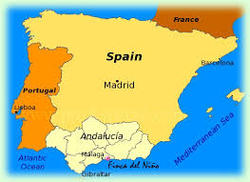 Sherry has been around for centuries and is considered one of the oldest wines in the world. Authentic sherry can only come from the southwest area of Spain, in Andalucía which is recognized by the DO (denomination de origin). There are three main towns here that form a triangle called the “Sherry Triangle”. It is from within this triangle of Jerez, El Puerto de Santa Maria and Sanlúcar de Barrameda that sherry is made. The grapes used for making sherry are Palomino, Muscatel and Pedro Ximenez. The soil, which is chalk and limestone based, the winds, humidity and seasonal changes in this area all contribute to giving sherry its unique characteristics. Sherry is known for its aromatic, salty and nutty profile and runs from dry to sweet, although the majority of sherry produced is dry. The color of sherry ranges from light straw to dark brown. The photo below was taken from a sherry seminar that I attended last year and represents a wide range of sherry colors. All sherry is aged for a minimum of three years and aged in old sherry casks using the Solera system. The Solera system is an aging process that uses new batches of sherry mixed with older ones in a tiered or pyramid structure. The bottom tier is the solera, the eldest sherry, which never entirely leave the system. The rows above contain the younger sherries (criadera). Once a portion of the wine is extracted from the solera, it is replaced with the same amount of wine from the first criadera and so on, creating a unique complexity and personality in the wine. Because sherry is a blend of different vintages it is impossible to give an exact age of a wine that has been aged in a solera. So it is possible that one could be drinking a sherry that might contain anywhere from 3 to 100 vintages! There are several types of sherry available. Here is a quick rundown on how they differ. Fino de Jerez is the youngest (usually 3-5 years old) and the driest of sherries. They age under a layer of flor (yeast). This layer of flor protects the wine from being oxidized and it also consumes all the sugar in the wine, creating a dry sherry. Fino only comes from Jerez and El Puerto de Santa Maria. Manzanilla is another dry sherry that is just like Fino, except that Manzanilla comes only from the coastal town of Sanlúcar. Both Fino and Manzanilla have more wine salinity than the other styles. They will complement fish and shellfish. Amontillado is an aged Fino or Manzanilla. Once the layer of flor fades the wine begins to oxidize and takes on a new character. It can be fortified up to 18%. The color is darker and it is less briny, but nuttier and richer on the palate. These wines pair well with white meat and game. Palo Cortado is an interesting sherry that begins as a Fino or Manzanilla but for no known reason it unexpectedly loses its layer of flor too soon. Once the flor dies, the wine takes on oxygen and requires further fortification. In other words, it does “its own thing”. This wine has richness but is crisp as well. Oloroso (‘scented’ in Spanish) intentionally never develops flor. Aging through oxidation of up to 40+ years produces a full-bodied, aromatic, dark and rich wine. Oloroso contains the most amount of alcohol in a sherry with levels of 18% to 20%. This is a great wine for hearty entrees, meats and stews. Pedro Ximenez (PX) is an intensely sweet wine and the sweetest of the sherries. The grapes are dried in the sun allowing the juices to concentrate prior to pressing. This is a rich wine that oozes raisins, nuts and fig. Cream Sherry is usually a blend of Oloroso, PX or Moscatel but can come in a variety of styles. This is a semi-sweet wine that is aromatic, dark in color with classic notes of nuts and caramel. Here are just a few of the sherries that I tasted the other day. When it comes to pairing sherry with food, there is a saying of which I have no idea of its origin: If it swims… drink with Fino or Manzanilla) If it flies… drink with Amontillado If it walks… drink with Oloroso Sherry is versatile and there is a style for everyone. Pair it with food, drink it as you would a favorite whiskey or explore mixing it in a cocktail. Sherry is making a strong comeback and I think it’s about time! Cheers! Penina To leave a comment or if you have an inquiry, please contact me at [email protected]
|
Categories
All
|

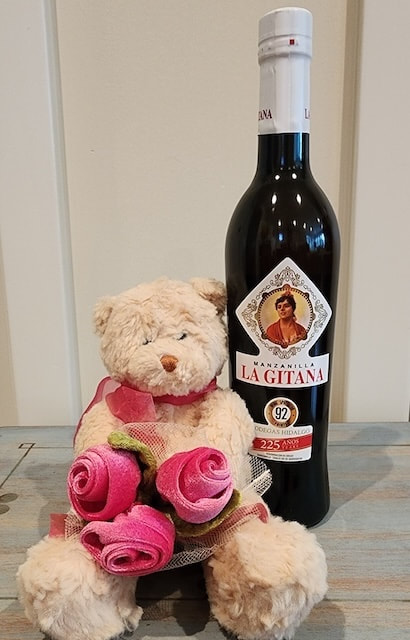
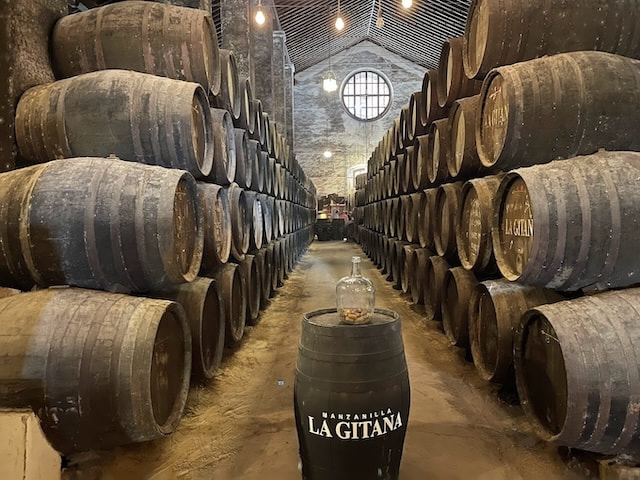
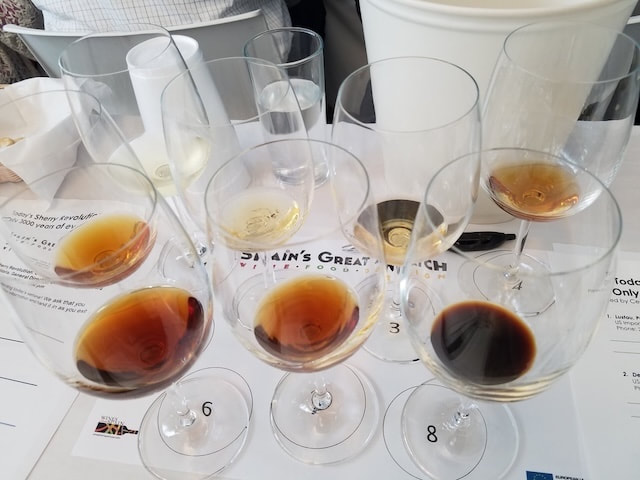
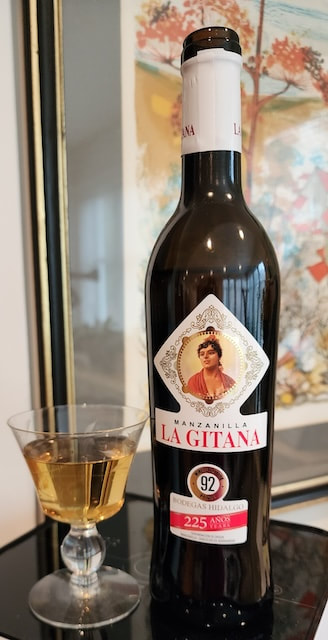
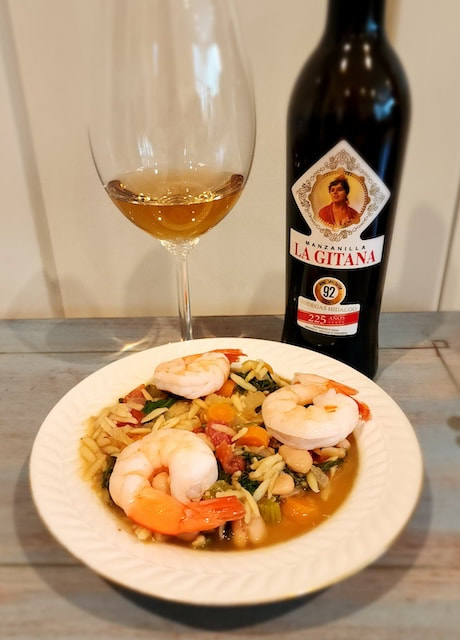

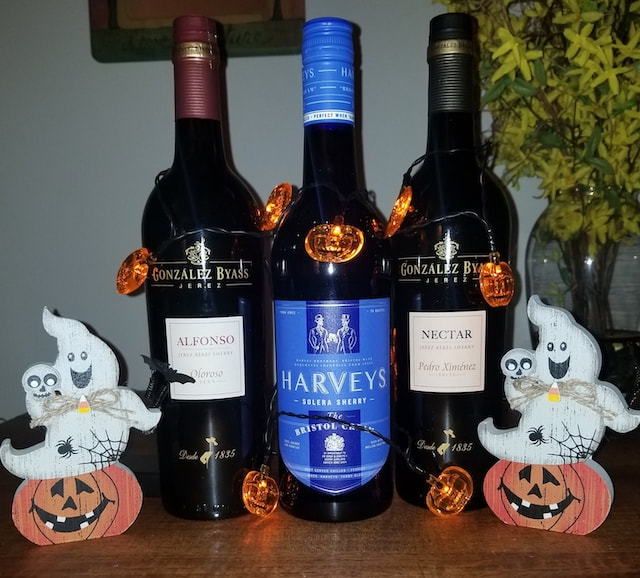
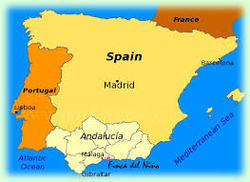
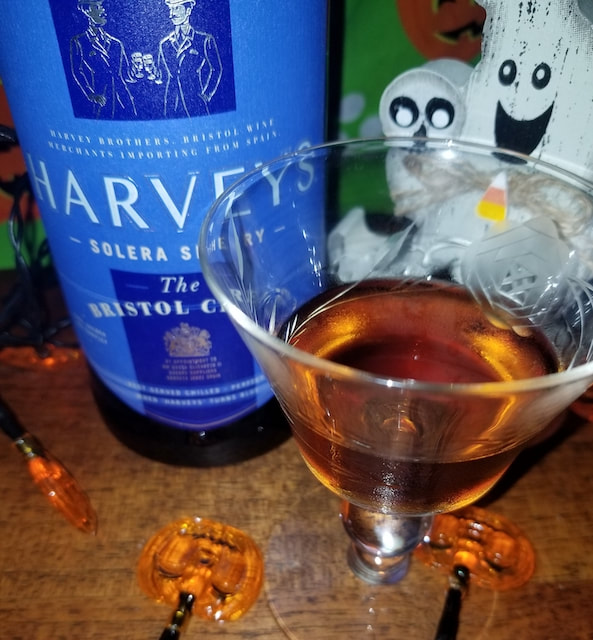
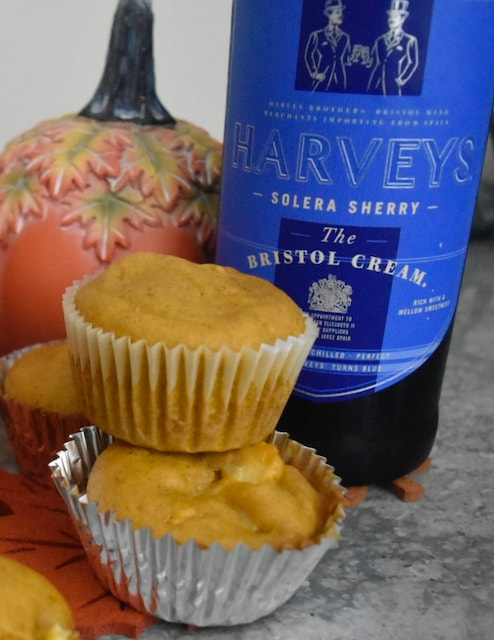
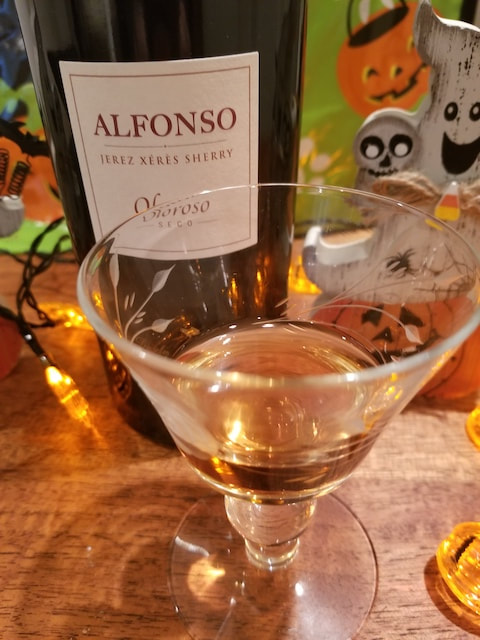
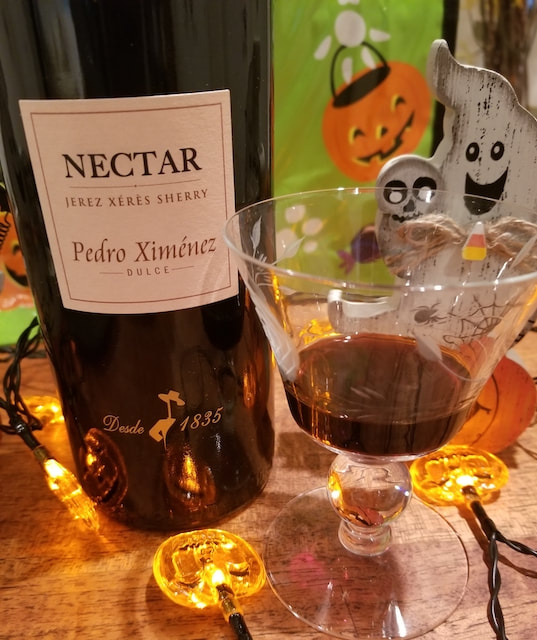
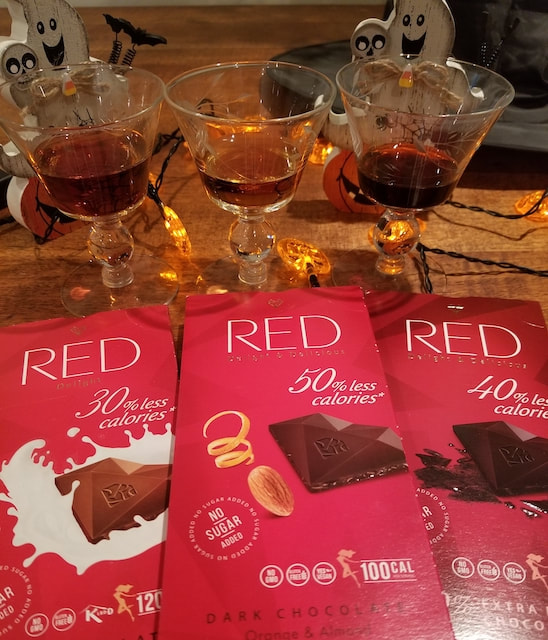
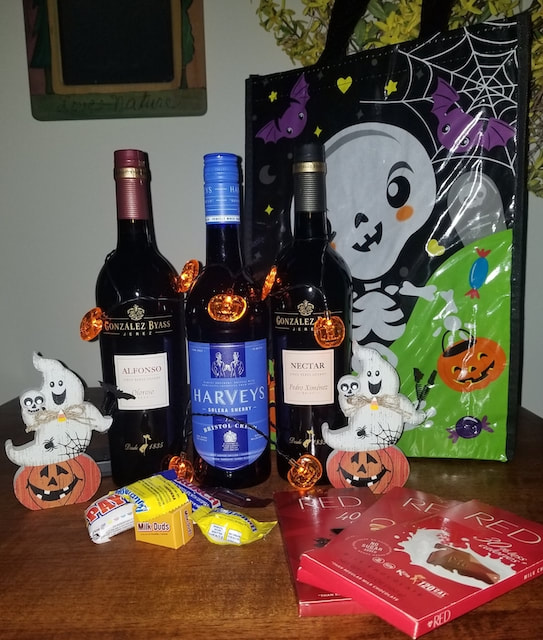

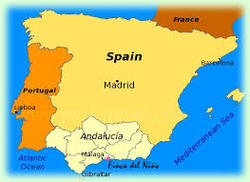
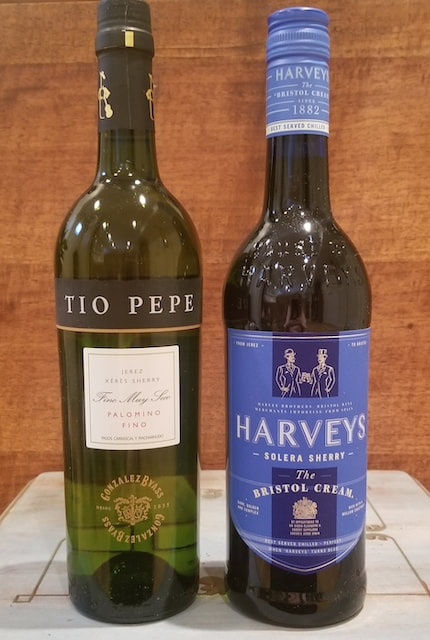
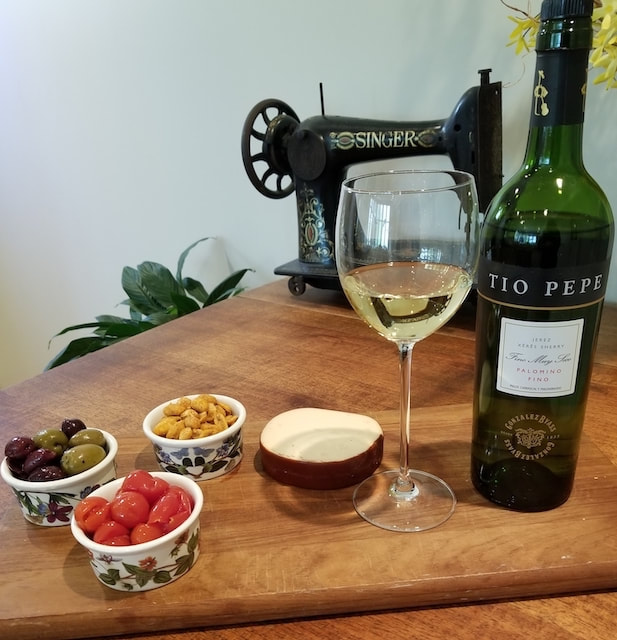
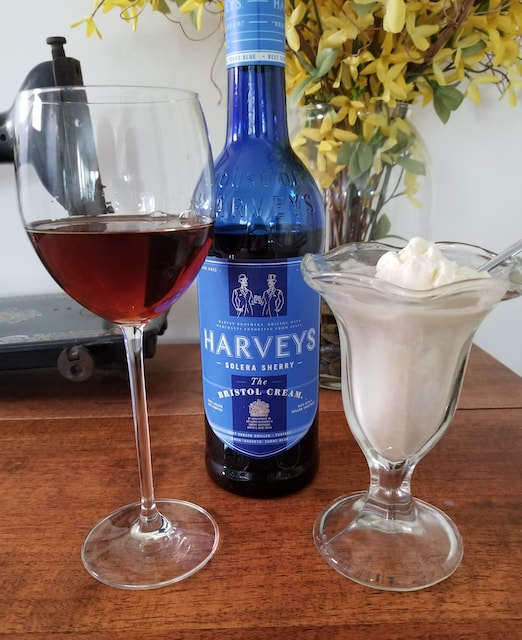

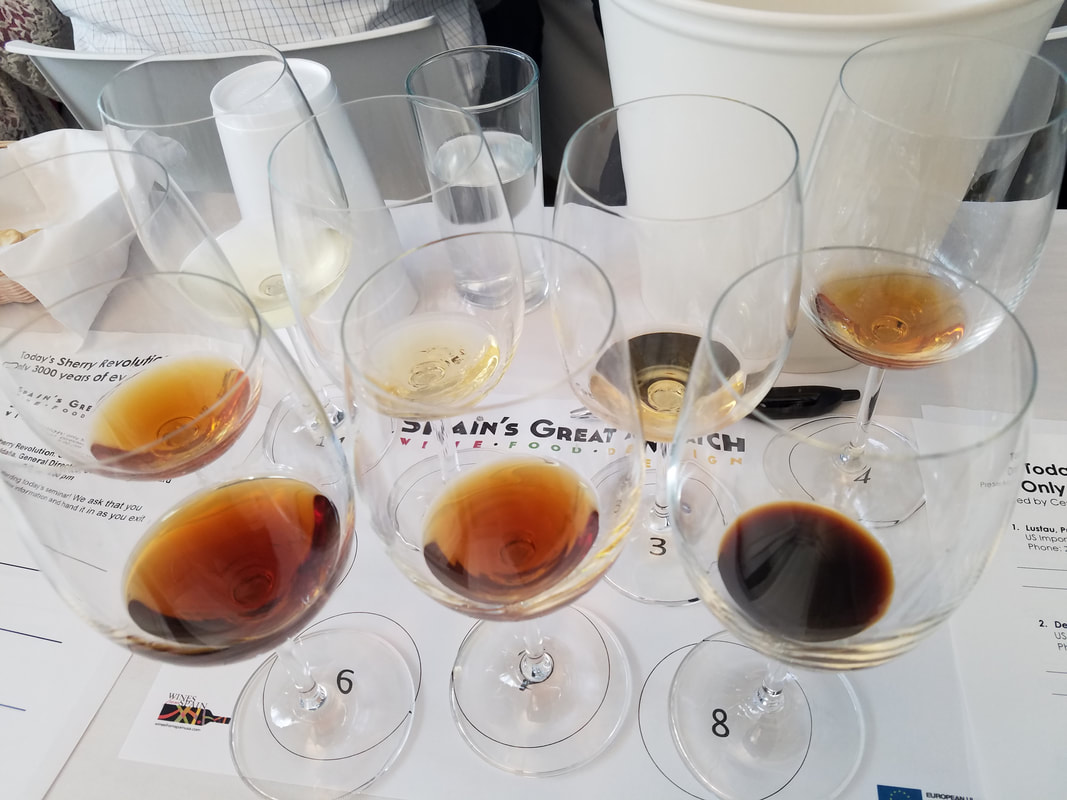
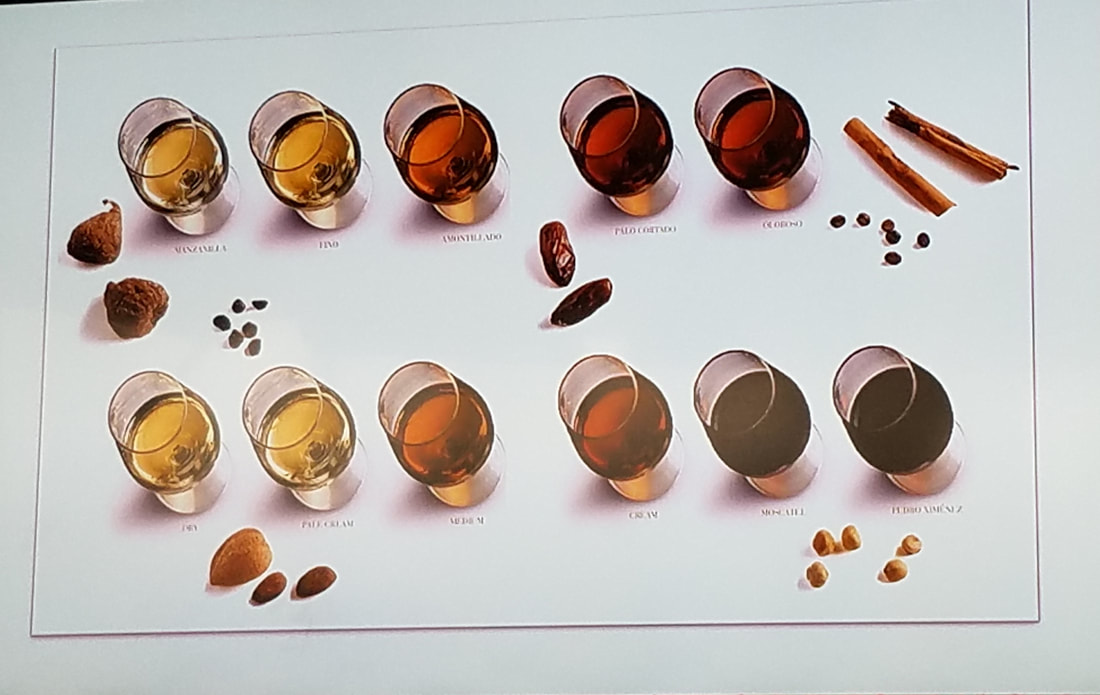
 RSS Feed
RSS Feed